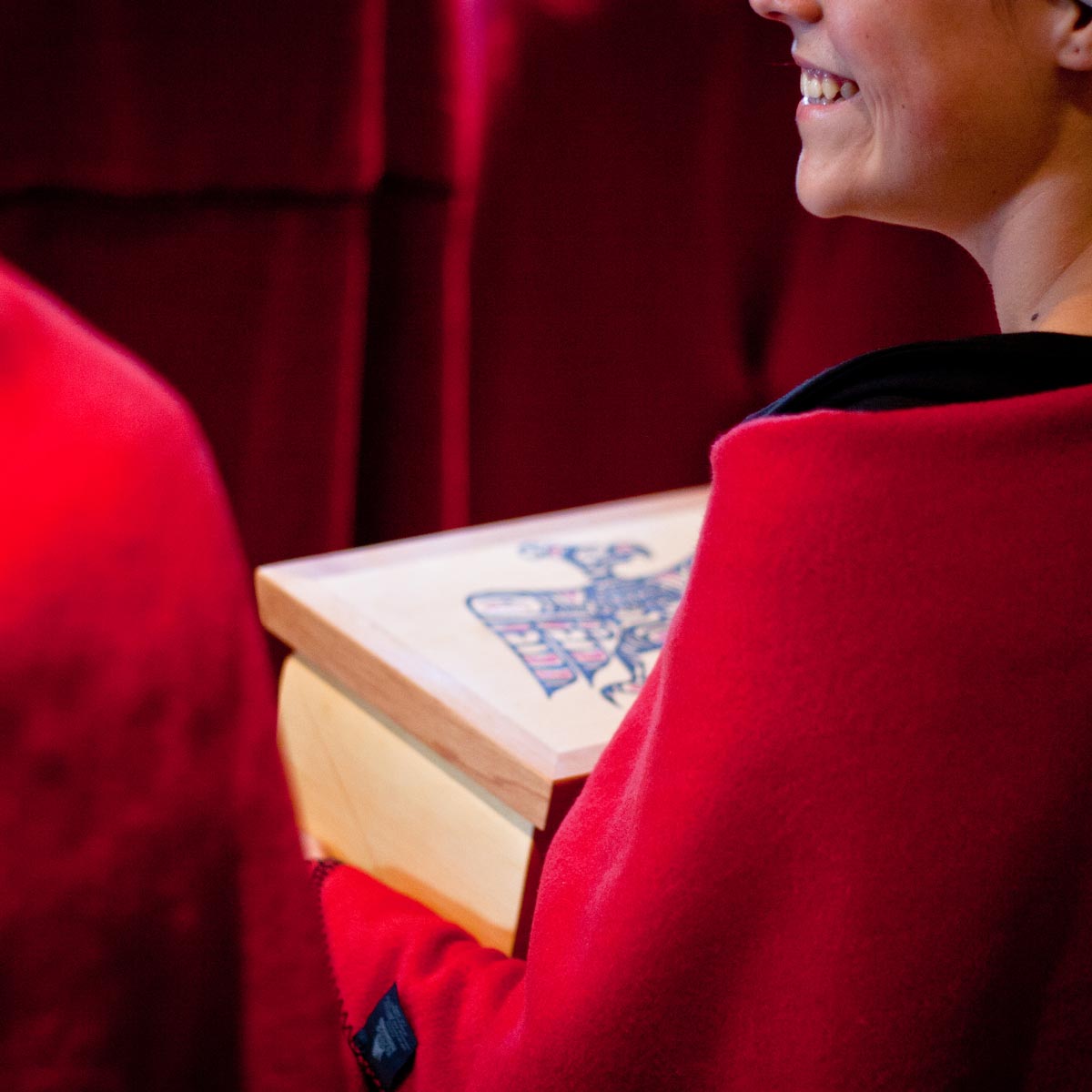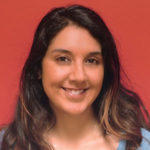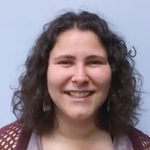
Practicum Opportunities
VACFSS is committed to offering child welfare practicum placements that provide meaningful learning opportunities for students to help them prepare for work in Indigenous family services. We provide a range of practicum placements within the agency, where students are able to immerse themselves in restorative child welfare practice that is grounded in Indigenous knowledge and cultural practice.
We Look for Students Who Are Currently:
- Enrolled in a Bachelors of Social Work (BSW) or Maters of Social Work (MSW) or Bachelors of Child and Youth Care (BCYC)
- In their 4th year of BSW or BCYC or practicum semester of MSW
We Prioritize Students Who:
- Are working towards their Child Welfare Specialization or Indigenous Studies Specialization
- Identify as Indigenous
- Are doing a full time block placement (a full time semester placement), rather than part time placement over 2 semesters
- Have their Class 5 driver’s license
Next Steps:
If you think you have what we are looking for, please follow these steps:
- Contact your field placement coordinator at your school and let them know you are interested in a placement at VACFSS
- Ask your field placement coordinator to contact us at info@vacfss.com or 604-875-7000
- Submit a cover letter and resume through your field placement coordinator in order to apply for a placement
For more information, please contact info@vacfss.com or 604-875-7000
What Former Practicum Students Say
Amrit
What drew you to do your placement at VACFSS?
I was drawn to how VACFSS has and continues to practice from a strengths-based and decolonizing perspective, specifically in a challenging area such as child welfare. I wanted to be part of the agency and practice from this modality.
What was the highlight of your practicum?
I appreciated having a skilled, understanding, and caring mentor during my practicum. Having an influential mentor further allowed me to gain confidence in my skill set as a new social worker.
What opportunities did you have as a practicum student that you might not have at other placements?
Being able to move around (for short periods) throughout the agency to different programs such as Family Preservation, Resources, and Guardianship gave me a better understanding of how VACFSS works together to serve families and children better. Additionally, having the chance to see how different offices within the agency work further enriched my knowledge as a new social worker. I strongly feel I do not think I would have had a similar opportunity at another social service agency.
What drew you to apply as a staff member with VACFSS?
Having had a positive experience as a practicum student at VACFSS confirmed that I wanted to learn, grow and give back to the families and children, to whom I had a privilege to work alongside as a student. Moreover, I felt I could see myself thriving as a new social worker within the agency.
How is practice different at VACFSS?
Having done my practicum within the child protection/family service area gave me a better understanding of how collaborative practice in child welfare can be done. I value working and learning alongside the Elders and being part of an agency that puts culture, respect, and practices from a holistic model-where the families lead us in understanding how to support them better.
What advice do you have for future practicum students?
Do not be afraid to ask questions and make mistakes along the way. Also, vocalize with your mentor how to better support your learning, and communicate your needs. I recently realized the importance of making self-care a priority. If you take care of your mental, emotional, and physical health, you will be in a better position to support families and children.
Jessica
What drew you to do your placement at VACFSS?
I was interested in completing the Child Welfare Specialization for my Bachelor of Social Work (BSW) degree and one of the requirements for this was completing a practicum placement at a child welfare agency. I wanted a practicum placement with an organization that worked with Indigenous children, youth, and communities and included Indigenous ways of knowing and perspectives at the centre of practice. VACFSS’ values of respect, integrity, belonging, humility, and strengths-based practice and the cultural programming and engagement opportunities for youth, such as the Culturally Relevant Urban Wellness program, also drew me to VACFSS for my practicum placement.
What was the highlight of your practicum?
There were multiple highlights of my practicum experience with VACFSS. I really appreciated the opportunity to work with the VACFSS Youth Advisory Committee (YAC) in planning their annual youth conference and experience working alongside inspiring youth leaders. I enjoyed the time I got to learn about the cultural programming offered through VACFSS and work with new youth mentors and long-time advocates. The highlight that sticks out the most for me is my supervisor; I was matched with a supervisor who shared similar values and passions to me, but was also someone who had a lot of wisdom and knowledge to share. It also helped that we got along great!
What opportunities did you have as a practicum student that you might not have at other placements?
Being a practicum student with VACFSS provided opportunities to engage in cultural activities and events, as well as work alongside a group of strong youth advocates and young leaders in the YAC. I really appreciated the opportunity to learn from, and connect with, Elders and Knowledge Keepers from Nations across Turtle Island. VACFSS also has a number of protocols with Nations and other Delegated Aboriginal Agencies (DAA), and it was an amazing learning opportunity to be able to witness a protocol meeting. I also found the conference VACFSS held to be an amazing opportunity to learn and network.
What drew you to apply as a staff member with VACFSS?
I wanted to apply at VACFSS as a staff member because of the experience I had at the organization during my practicum placement and I was interested in continuing the work I was doing with Carolyn Oliver involving research and policy development. In addition to this, I wanted to work at VACFSS because of the opening for a Child and Youth Cultural Engagement Coordinator. This position spoke to me as it was a multifaceted position that included working one-on-one and in group settings with children and youth, coordinating cultural programming, grant proposal writing and networking in the community. Having a role that is well-rounded and flexible has always been important to me!
How is practice different at VACFSS?
I like the emphasis on relational and cultural permanency for children and youth in care that is the forefront of practice at VACFSS. The inclusion of youth in sharing their knowledge and aiding in the development of policy and practice standards are also important for me, as is the VACFSS emphasis on cultural programming and opportunities for children and youth.
What advice do you have for future practicum students?
Take advantage of whatever opportunities are available to you during your practicum placement – this is the time to experience different areas of practice in child welfare and figure out what you are passionate about. There are quite an array of opportunities within VACFSS, including participating in the Strengthening Families/Strengthening Fathers programs, the Youth Advisory Committee, child and youth cultural programming, cultural events such as Honouring the Journey of Our Youth or Honouring Our Sacred Bundles, learning from Elders and Knowledge Keepers, and shadowing workers in other departments/offices, among others! Practicum placements are such a unique time – once you are working you don’t always have the same opportunities to be so open and flexible in new experiences. And try to have fun!
Martina
 Martina is a member of Ktunaxa Nation, from the ʔAkisq̓nuk First Nation band located in Windermere, BC.
Martina is a member of Ktunaxa Nation, from the ʔAkisq̓nuk First Nation band located in Windermere, BC.
Martina was drawn to social work because of her passion to see Indigenous families and communities reclaim Indigenous Ways of Being and wanted to contribute to this social change. She chose to do her practicum in child welfare so that she could understand the system and be in a position to better support Indigenous families in whatever capacity that may be.
Martina wrote this beautiful letter to her colleagues at the Child Protection Program as she wanted to share her gratitude for all that she has learned during her time at VACFSS. Just like it takes a village to raise a child, it also takes a village to support and teach a practicum student.
Martina is a shawl dancer and is passionate about language revitalization. When she is not in school or work, you can find her playing softball or playing with her daughter and teaching her the Ktunaxa language.












